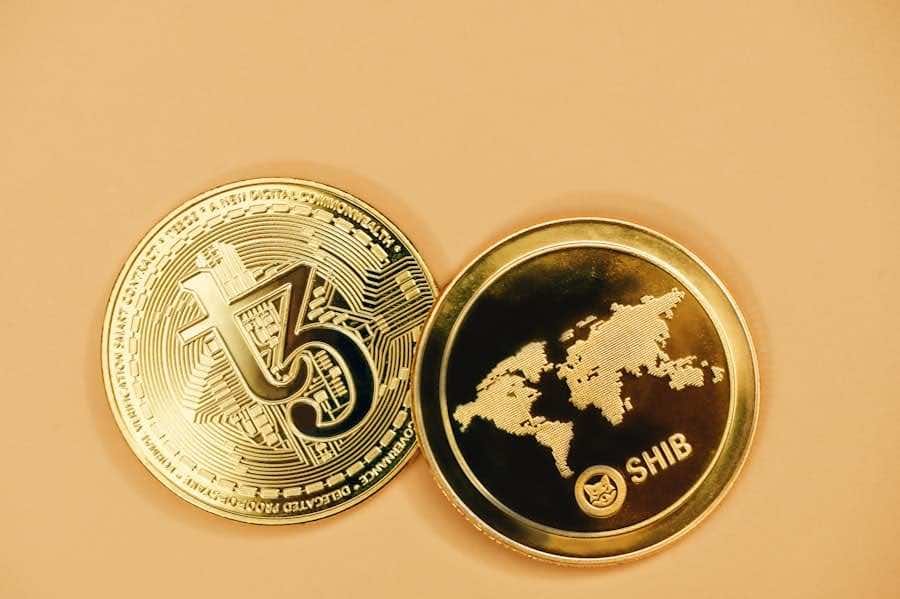Trustless transactions represent a fundamental shift in how individuals and entities interact within digital ecosystems, particularly in the realm of blockchain technology. The term “trustless” does not imply a lack of trust altogether; rather, it signifies a system where trust is not a prerequisite for transactions to occur. In traditional financial systems, trust is often established through intermediaries such as banks or payment processors, which serve as custodians of transactions.
However, in a trustless environment, the reliance on these intermediaries is eliminated, allowing for direct peer-to-peer interactions. The essence of trustless transactions lies in the underlying technology of blockchain itself. Blockchain operates as a distributed ledger that records all transactions across a network of computers, ensuring transparency and immutability.
Each transaction is cryptographically secured and linked to previous transactions, creating a chain of blocks that is nearly impossible to alter without consensus from the network participants. This decentralised nature fosters an environment where users can engage in transactions without needing to place their faith in a central authority, thus redefining the concept of trust in digital interactions.
Summary
- Trustless transactions in blockchain eliminate the need for a trusted intermediary, allowing parties to transact directly with each other.
- Blockchain technology ensures trustless transactions by using consensus mechanisms and cryptographic techniques to validate and record transactions on a distributed ledger.
- Advantages of trustless transactions include increased security, reduced costs, and improved transparency and efficiency in financial transactions.
- Smart contracts play a crucial role in enabling trustless transactions by automatically executing and enforcing the terms of an agreement without the need for intermediaries.
- Potential risks and limitations of trustless transactions include the irreversibility of transactions, scalability challenges, and regulatory uncertainties.
How Trustless Transactions Work in Blockchain
At the core of trustless transactions is the consensus mechanism employed by blockchain networks. Various consensus algorithms, such as Proof of Work (PoW) and Proof of Stake (PoS), facilitate agreement among network participants regarding the validity of transactions. In PoW, miners compete to solve complex mathematical problems, and the first to succeed gets to add a new block to the blockchain.
This process not only validates transactions but also secures the network against malicious activities. Conversely, PoS relies on validators who are chosen based on the number of coins they hold and are willing to “stake” as collateral, thus incentivising honest behaviour. Once a transaction is initiated, it is broadcasted to the network where it awaits validation.
Nodes within the network verify the transaction’s authenticity by checking its cryptographic signatures and ensuring that the sender has sufficient funds. Upon successful validation, the transaction is grouped with others into a block and added to the blockchain. This entire process occurs without any need for intermediaries, allowing for faster and more efficient transactions.
The transparency inherent in blockchain technology means that all participants can view the transaction history, further reinforcing the trustless nature of the system.
Advantages of Trustless Transactions in Blockchain

The advantages of trustless transactions are manifold and have significant implications for various sectors. One of the most notable benefits is enhanced security. Since trustless transactions rely on cryptographic techniques and decentralised consensus mechanisms, they are inherently more secure than traditional systems that may be vulnerable to fraud or hacking.
The immutable nature of blockchain records ensures that once a transaction is confirmed, it cannot be altered or deleted, providing a robust audit trail. Another significant advantage is increased efficiency. Traditional financial systems often involve multiple intermediaries, each adding layers of complexity and time to transactions.
Trustless transactions streamline this process by enabling direct exchanges between parties, reducing transaction times from days to mere minutes or even seconds. This efficiency is particularly beneficial in cross-border transactions, where traditional methods can be slow and costly due to currency conversions and intermediary fees. By eliminating these barriers, trustless transactions can facilitate global commerce in a more seamless manner.
The Role of Smart Contracts in Trustless Transactions
Smart contracts are self-executing contracts with the terms of the agreement directly written into code. They play a pivotal role in enabling trustless transactions by automating processes that would typically require human intervention or oversight. When certain predefined conditions are met, smart contracts automatically execute the agreed-upon actions without the need for intermediaries.
This automation not only reduces costs but also minimises the potential for disputes arising from misinterpretations or human error. For instance, in a real estate transaction, a smart contract could be programmed to release funds to the seller only when all conditions—such as property inspections and title transfers—are satisfactorily completed. This ensures that both parties fulfil their obligations before any money changes hands, thereby enhancing trust in the transaction process without necessitating a third party’s involvement.
The programmability of smart contracts allows for complex agreements to be executed with precision and reliability, further solidifying their role in trustless transactions.
Potential Risks and Limitations of Trustless Transactions
Despite their numerous advantages, trustless transactions are not without risks and limitations. One significant concern is the potential for coding errors within smart contracts. Since these contracts operate based on predetermined code, any flaws or vulnerabilities can lead to unintended consequences or exploitation by malicious actors.
High-profile incidents, such as the DAO hack in 2016, highlight how vulnerabilities in smart contracts can result in substantial financial losses. Additionally, while blockchain technology offers transparency, it also raises privacy concerns. Transactions recorded on public blockchains are visible to all participants, which can lead to sensitive information being exposed.
Although various solutions exist to enhance privacy—such as zero-knowledge proofs—these technologies are still evolving and may not yet be widely adopted across all platforms. Furthermore, regulatory uncertainties surrounding blockchain technology can pose challenges for businesses looking to implement trustless transactions, as compliance with existing laws may be difficult in an environment that operates outside traditional frameworks.
Trustless Transactions in Decentralized Finance (DeFi)

Decentralised Finance (DeFi) has emerged as one of the most prominent applications of trustless transactions within blockchain ecosystems. DeFi platforms leverage smart contracts to recreate traditional financial services—such as lending, borrowing, and trading—without intermediaries like banks or brokers. This innovation allows users to engage in financial activities directly with one another while maintaining control over their assets.
For example, platforms like Aave and Compound enable users to lend their cryptocurrencies in exchange for interest or borrow against their holdings without needing a credit score or extensive paperwork. The trustless nature of these transactions ensures that users can participate without fear of counterparty risk or fraud since all interactions are governed by transparent smart contracts that execute automatically based on predefined conditions. This democratization of finance has opened up opportunities for individuals who may have been excluded from traditional banking systems due to geographical or socio-economic barriers.
Real-world Applications of Trustless Transactions
The real-world applications of trustless transactions extend far beyond finance and into various industries such as supply chain management, healthcare, and digital identity verification. In supply chain management, companies can utilise blockchain technology to create transparent and traceable records of product journeys from origin to consumer. For instance, Walmart has implemented blockchain solutions to track food products through its supply chain, allowing for rapid identification of contamination sources during food safety crises.
In healthcare, trustless transactions can enhance patient data management by providing secure and immutable records that patients control. This approach not only protects sensitive information but also facilitates seamless sharing between healthcare providers while ensuring compliance with regulations like GDPR. Furthermore, digital identity verification systems built on blockchain can empower individuals by giving them control over their personal data while reducing identity theft risks associated with centralised databases.
The Future of Trustless Transactions in Blockchain Technology
As blockchain technology continues to evolve, the future of trustless transactions appears promising yet complex. Innovations such as layer-two scaling solutions aim to enhance transaction speeds and reduce costs while maintaining security and decentralisation principles. These advancements could further facilitate widespread adoption across various sectors by addressing current limitations related to scalability.
Moreover, as regulatory frameworks around blockchain technology become more defined, businesses may find it easier to navigate compliance challenges associated with implementing trustless transactions. The integration of artificial intelligence (AI) with blockchain could also lead to more sophisticated smart contracts capable of adapting to changing conditions or user behaviours in real-time. In conclusion, while challenges remain, the trajectory towards a future where trustless transactions become commonplace is evident.
As more industries recognise the benefits of decentralisation and automation through blockchain technology, we may witness a transformative shift in how we conduct business and interact with one another on a global scale.
Trustless transactions in blockchain technology are revolutionising the way we exchange value online. This innovative system allows for secure and transparent transactions without the need for intermediaries. As explained in a related article on precautions to take when borrowing money from online lenders, blockchain’s trustless nature ensures that transactions are verified and recorded on a decentralised ledger, providing a level of security and reliability that traditional financial systems cannot match. This article highlights the importance of understanding the risks involved in online transactions and the measures that can be taken to protect oneself in the digital age.
FAQs
What are trustless transactions in blockchain?
Trustless transactions in blockchain refer to the ability to conduct secure and transparent transactions without the need for trust or reliance on a central authority. This is made possible by the use of cryptographic techniques and consensus mechanisms within the blockchain network.
How do trustless transactions work in blockchain?
Trustless transactions in blockchain work by using a distributed ledger system where all transactions are recorded and verified by multiple participants in the network. This eliminates the need for a trusted intermediary, as the integrity of the transactions is ensured by the consensus of the network.
What are the benefits of trustless transactions in blockchain?
The benefits of trustless transactions in blockchain include increased security, transparency, and decentralization. Trustless transactions also reduce the risk of fraud and manipulation, as well as the need for costly intermediaries in financial transactions.
What role does cryptography play in trustless transactions in blockchain?
Cryptography plays a crucial role in trustless transactions in blockchain by ensuring the security and privacy of the transactions. It is used to encrypt and secure the data within the blockchain, as well as to authenticate and verify the identity of the participants in the network.
How are trustless transactions different from traditional transactions?
Trustless transactions in blockchain differ from traditional transactions in that they do not require trust in a central authority or intermediary to facilitate the transaction. Instead, trustless transactions rely on the consensus of the network and cryptographic techniques to ensure the integrity and security of the transactions.
